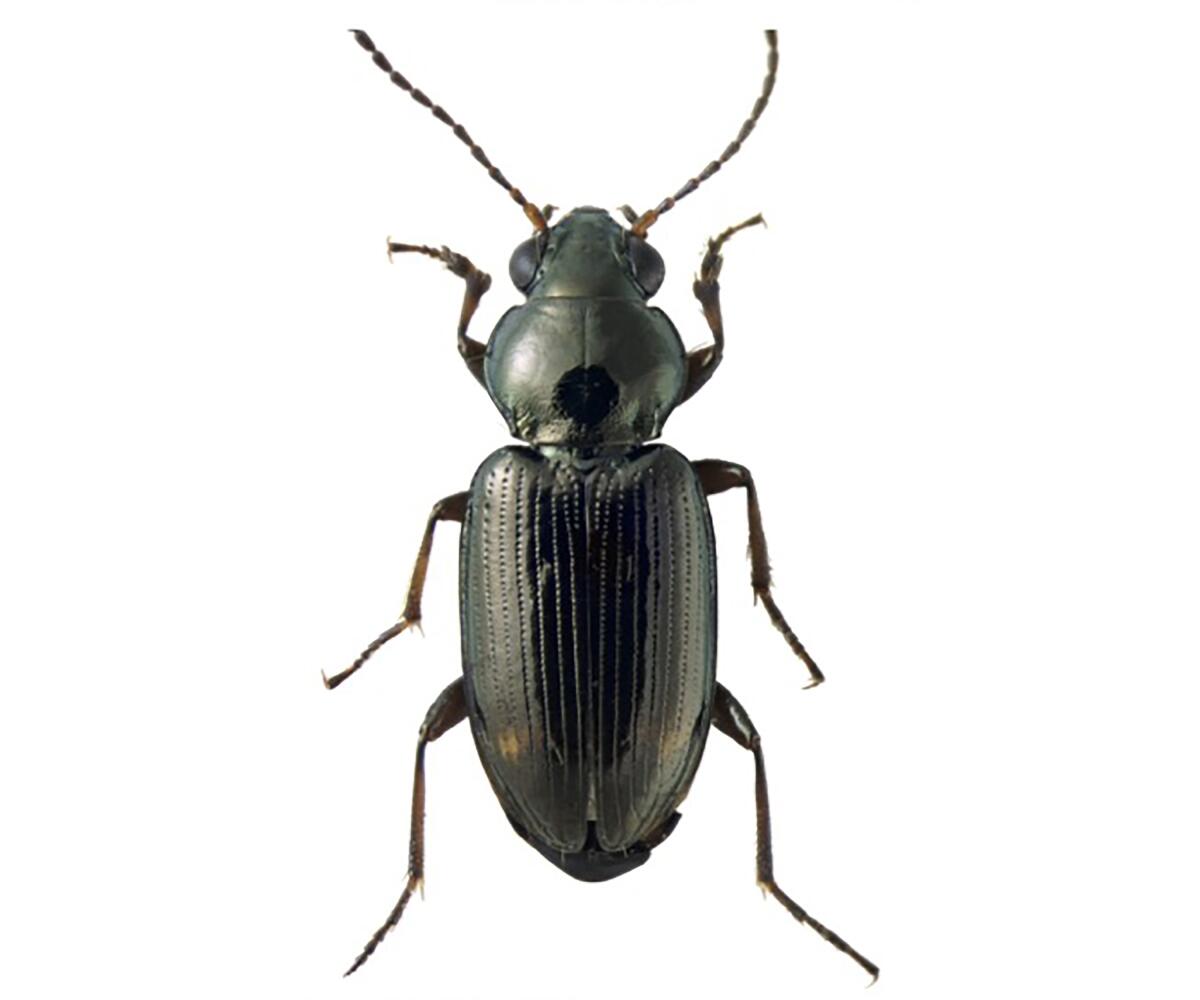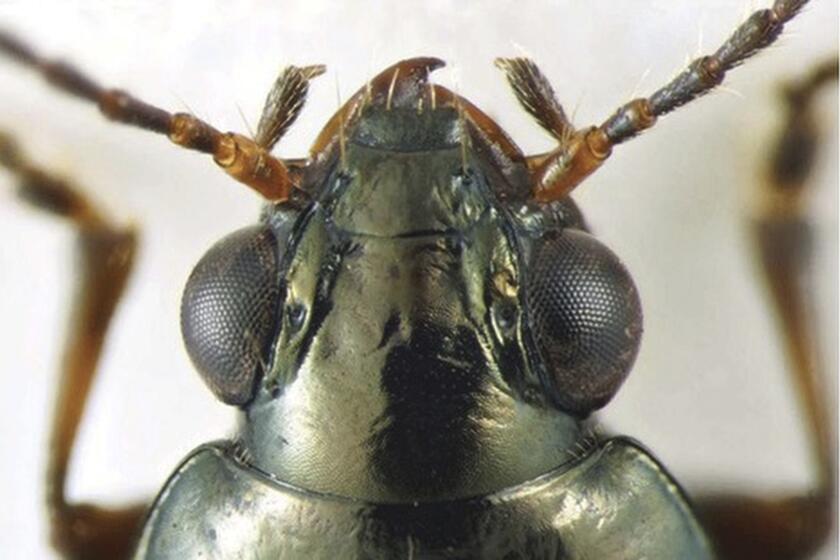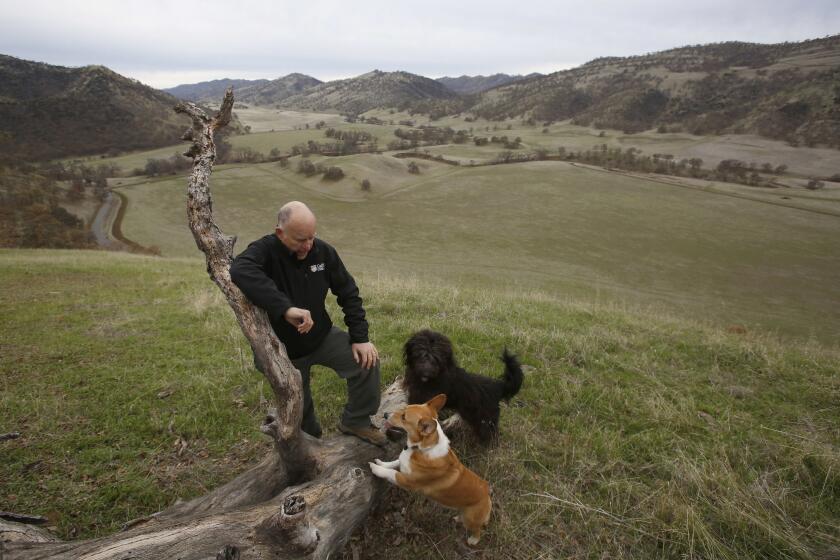Opinion: Jerry Brown’s beetle legacy

- Share via
California is littered with tributes to past and present politicians — courthouses, roads, bridges, schools, parks, even an aqueduct, all named after elected officials anxious to ensure that their legacies live on long after they are gone.
At his insistence, there has been nothing named after California’s longest-serving governor. Until now.
Jerry Brown, who rebuffed the naming convention both as the state’s youngest governor in modern times and the oldest, consented to lend his name to a rare species of beetle discovered on the rural ranch and ancestral home where he now lives: Bembidion brownorum.
Many things are fitting about this designation. It is in Latin, a language often quoted by the classics major and former Jesuit seminarian. The unassuming beetle, one might argue, is an exemplar of one of Brown’s favorite Jesuit adages: Age quod agis. Do what you’re doing. The possessive plural in the scientific name — the literal translation is “beetle of the Browns” — includes Anne Gust Brown, his wife and partner in everything Brown has done for the past two decades, including his unprecedented return to the governorship three decades after he’d left. The beetle’s existence is a small victory in the struggles of environment vs. man, a cause that Brown embraced in various manifestations throughout his political career.
Scientists are naming a rare species of beetle in honor of former California Gov. Jerry Brown after finding one at his ranch in Colusa County.
Above all, the discovery marks for both the beetle and its namesake a “reinhabitation,” a term Brown borrowed from actor Peter Coyote to describe his decision to move to the isolated ranch his great-grandfather acquired in 1878.
When Brown began visiting the Colusa County ranch an hour north of Sacramento, there were just a few dilapidated barns on the land where his ancestors had run the Mountain House Inn, a popular 19th century gathering spot at a well-traveled crossroads. While he was governor, the Browns began to spend weekends in a small cabin at the ranch, with no electricity or water. As the end of his final term approached, they planned Mountain House III, the self-sufficient, off-the-grid home that they moved into in 2019.
Brown saw his return as a way to restore the Mountain House as a place conducive to communal conversation and exploration. Well before he moved in, he invited scientists to research the soil, flora and fauna. One of those was UC Berkeley entomologist Kipling Will, who studies beetles. Near a creek on the ranch, Will found a beetle he had never seen. It turned out no one else had either, in more than 55 years. At 5 millimeters long, the new species is large for a member of the Bembidion genus, and when looked at under magnification its brown color has a green-and-gold iridescence.
DNA tests confirmed visual observations that the beetle was distinct from all other species of the genus Bembidion, which generally live near bodies of water. As he describes in a journal article, Will scoured known collections and located another 21 samples that had been misidentified or unnamed, most found in the first half of the 20th century. The apparent decline prompted Will and colleagues to publicize the discovery, to encourage further identification of B. brownorum.
As governor, Brown did not hide his aversion to the naming practice. He opposed suggestions to rename the Bay Bridge after former Assembly Speaker Willie Brown. When Gov. Pat Brown badly wanted to have the state aqueduct named in his honor, Jerry tried to dissuade his father. After rebuffing the plan twice, Jerry acquiesced only after the head of the state water agency unilaterally scheduled a ceremony to christen the landmark project the Gov. Edmund G. Brown California Aqueduct.
In the final months of his historic fourth term, Jerry Brown routinely dismissed persistent questions about how he viewed his legacy. He did not think in those terms, he insisted. In truth, the answer would probably not have made much sense to most people. He views the Mountain House as his legacy.
On the eve of his 85th birthday next month, Brown is excited about Bembidion brownorum. Congratulations have poured in from around the world. If he had not once chastised me for asking what accomplishments made him proud — “Pride in my upbringing was a sin. ... I don’t get up in the morning and say, ‘What am I proud of’ ” — I might use that word to describe his emotions. Suffice it to say he derives a good deal of satisfaction that a humble beetle discovered at the Mountain House will help his legacy live on.
Miriam Pawel is the author of “The Browns of California: The Family Dynasty That Transformed a State and Shaped a Nation.”
More to Read
A cure for the common opinion
Get thought-provoking perspectives with our weekly newsletter.
You may occasionally receive promotional content from the Los Angeles Times.












